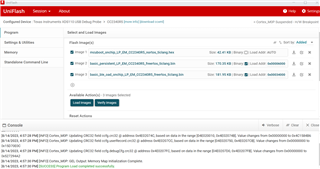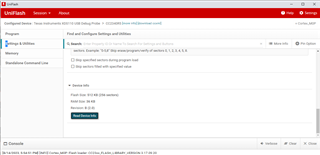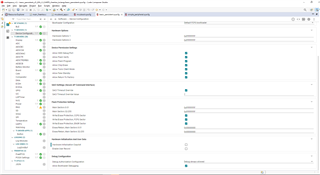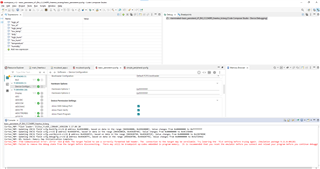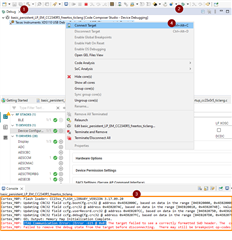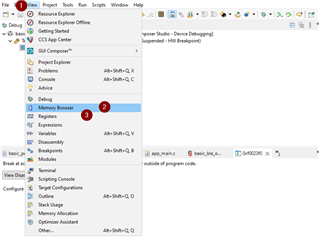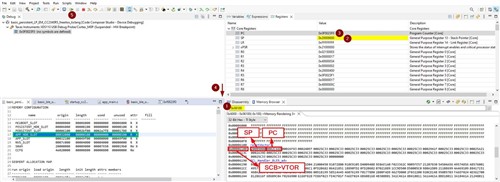Other Parts Discussed in Thread: CC2340R5, LP-XDS110ET, , UNIFLASH
Hi expert,
I'm running CC2340R5 example:C:\ti\simplelink_lowpower_f3_sdk_7_10_00_35\examples\rtos\LP_EM_CC2340R5\ble5stack\basic_ble_oad_onchip
when I flash the device it will show the JTAG Communication Error:
Cortex_M0P: JTAG Communication Error: (Error -615 @ 0x0) The target failed to see a correctly formatted SWD header. The connection to the target may be unreliable. Try lowering the TCLK setting before trying again. (Emulation package 9.11.0.00128)
Cortex_M0P: Failed to remove the debug state from the target before disconnecting. There may still be breakpoint op-codes embedded in program memory. It is recommended that you reset the emulator before you connect and reload your program before you continue debugging
I tried using the same setup with different examples, but this issue didn't occur.
I want to know why this problem occurs?
I also found the same error message in E2E, And I follow the steps mentioned by Ryan :
When I load the `unblock_loki_low_plus_pg2.gel` script, the status of the gel script will show Failed:
CS_DAP_0: GEL: Error loading file 'C:\ ...\unblock_loki_low_plus_pg2.gel': function 'ChipErase()' already defined
Should I comment out hotmenu ChipErase() in CC23xx_dap.gel, or what should I do?
The followings are the details of my test
SW: simplelink_lowpower_f3_sdk_7_10_00_35 basic_ble_oad_onchip
HW: LP-EM-CC2340R5 PG.2 + LP-XDS110ET Rev:B


